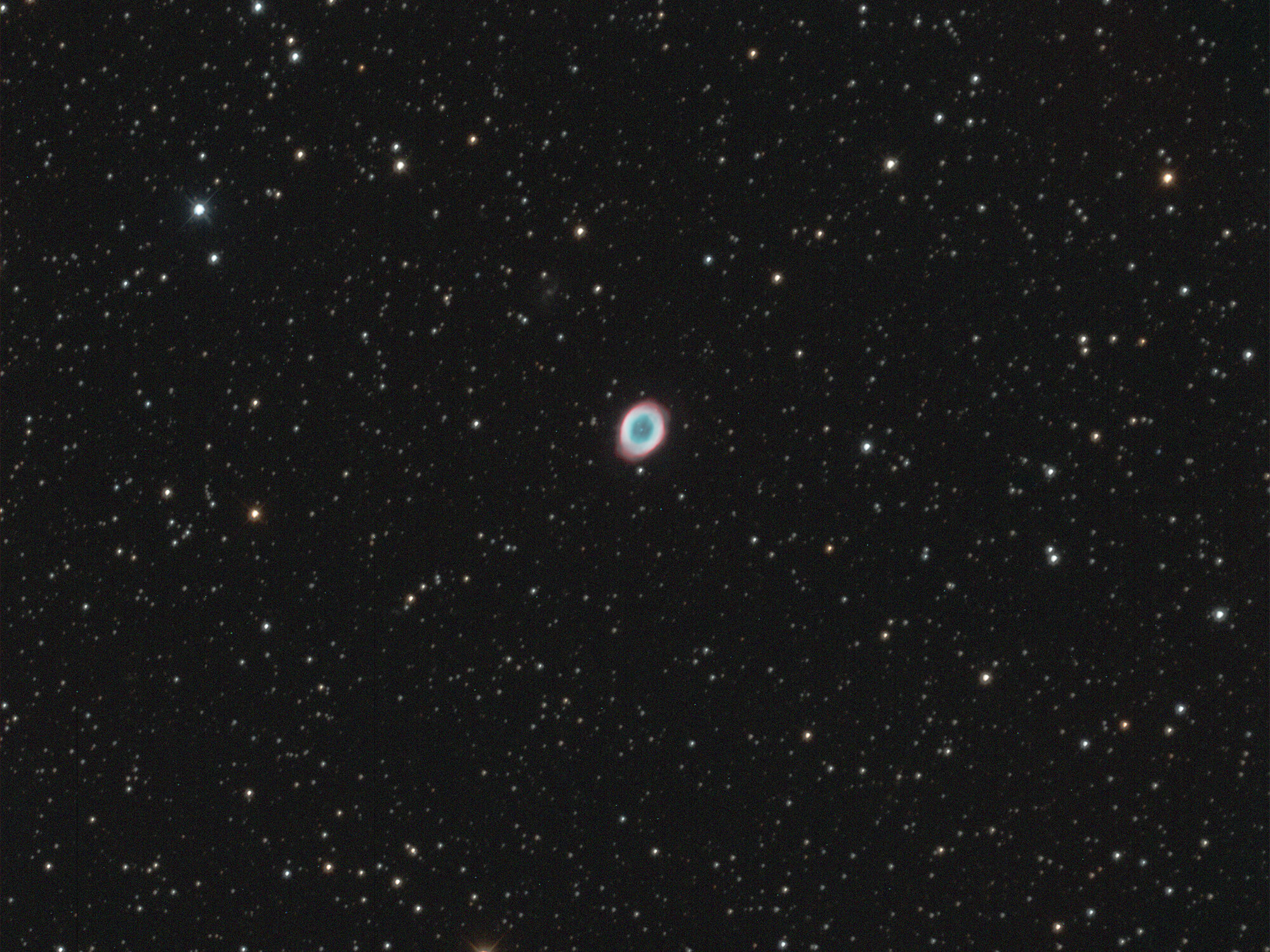M57 Ring Nebula
Messier 57, the Ring Nebula, is a so-called Planetary Nebula, called this because their relatively small, round shapes can be confused for planets. In fact they are the expanding gas shells, roughly spherical, of red giant stars which have ejected their outer layers. The remaining core, which is now a white dwarf, emits strong ultra-violet light which ionises and energises the ejected gas, making it glow. This phase of a star’s life only lasts a few tens of thousands of years, until the ultra-violet emission declines and the gas stops glowing.
In this case the shells is not symmetric and has an equatorial bulge, so it appears elliptical as we see it. The "crust" of the shell of expanding material is denser than the interior so it takes the form of a ring with a "hollow" interior -- it's not really hollow but the optical depth of material is less than at the edge. It's estimates that the ring has been expanding for just over 1600 years. The central star, a white dwarf, which can be seen in this image, has magnitude 14.8 and difficult to see visually, though the first reported observation dates back to 1800. The Ring Nebula is about 2300 light years away and is a popular object in small telescopes.
Where is it in the sky:


